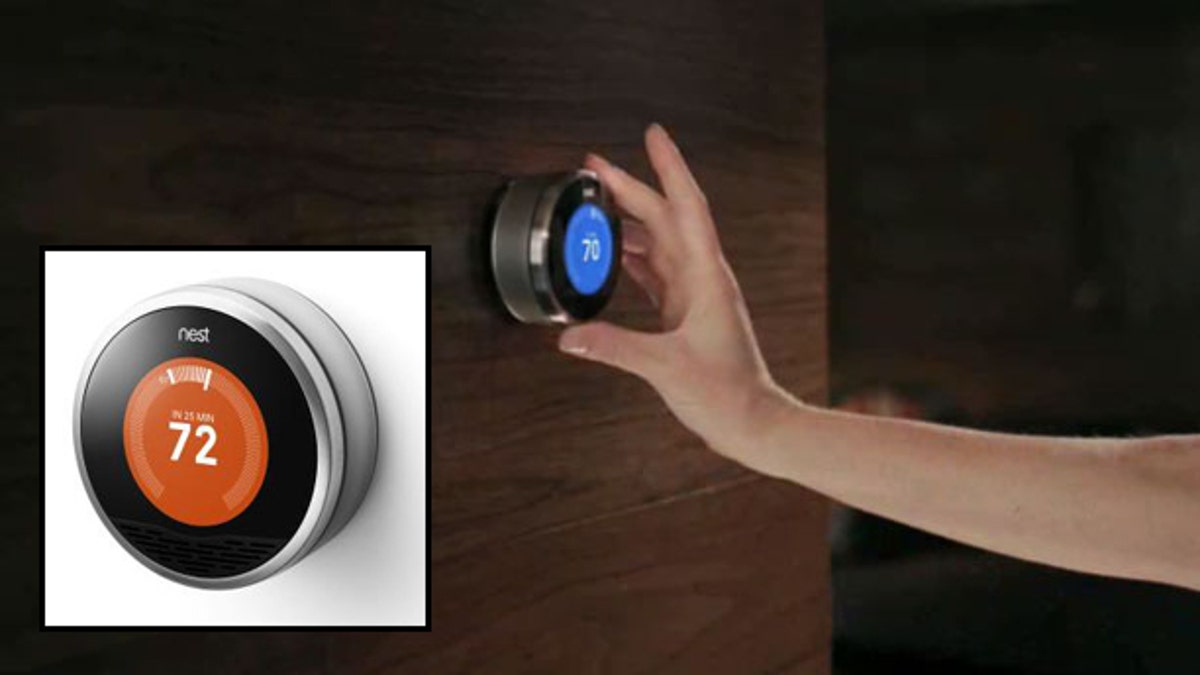
The world's first learning thermostat, created by Tony Fadell -- the man who sold Steve Jobs on the iPod -- may help lower your heating bill. (NEST Labs)
The scorching summer sun is probably causing you to constantly reach for the air conditioner dial, sending your energy bill through the roof. If you’re looking to keep your bills under control, here are six tips on how to cut back on energy usage in the summer months.
Clean Your Air Conditioner
A dirty, clogged air conditioner is inefficient and can cost you a bundle. By sucking in dust, dirt, leaves and other debris over the years, your air conditioner has to work harder and harder to draw in air. If you have a window unit, you can unscrew the cover and give it a good hosing down (though make sure you unplug it first). For central air conditioning systems, replace or clean the filters regularly.
If you’ve given it a good cleaning, but it still doesn’t seem to cool like it used to, you might have a leak in the system. Damaged coils in your air conditioner can cause the coolant to leak out, requiring it to do double duty to produce a nice cool breeze. If this is the case, take it in to get it repaired, or if it’s an older machine, consider buying a newer, more energy-efficient model.
Check for Obstructions
No matter what shape your air conditioner is in, it’s not going to work very well if it is obstructed. Rearrange your furniture to ensure that the vents are free to pump cool air into the home.
Check Your Ducts
Leaks in your ductwork can cost you dearly. Don’t waste money to cool air that you’ll just end up pumping outside. However, it is not just your ducts that can bleed precious cool air. Make sure to check the seals around doors, windows, and even electrical outlets, which can all allow cold air to escape and warm air to flow in.
Use the Thermostat to Your Advantage
The vast majority of people with programmable thermostats don’t bother to ever actually program them. Rather than waste energy all day long when you’re not around, use your thermostat’s program setting to up the temperature to around 85 degrees during the middle of the day. You can also set a higher temperature for the middle of the night when you’re asleep anyway and probably won’t notice a few extra degrees.
Look for Hotspots
While you want to limit the amount of cool air you lose, you also want to limit the amount of heat coming into your home. Windows are probably the biggest opening for heat in the home, but by keeping the drapes and blinds closed during the day, you can prevent the sun’s warming rays from heating up your home too much.
In addition to external sources like windows, you also have to worry about heat you generate inside your home. Incandescent bulbs, which generate a lot of heat, are one such culprit. By replacing these bulbs with cooler CFL bulbs, you might be able to shave a few degrees off your indoor temperature. Gadgets like computers, TVs and stereos can also produce a lot of heat, so make sure to turn these off when not in use.
Assess Your Room Usage
Chances are you don’t use all the rooms in your home equally. Rather than cool your entire home, figure out which rooms you really use. If you spend most of your time in the living room and bedroom, consider just using a window-unit air conditioner for those rooms during the day, rather than a whole-home central air conditioner.
You might also consider adjusting your home’s layout during the summer months. For instance, if you have a basement, consider moving your couch and TV down there. Since heat rises, basements are always naturally cooler, allowing you to set the thermostat a little higher while you’re relaxing in front of the TV.